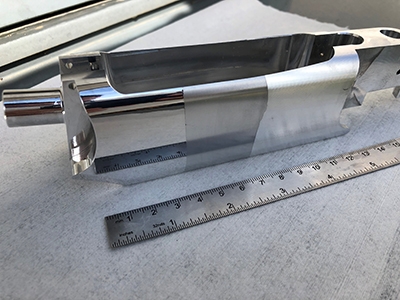Chapuis Armes, the French manufacturer of bespoke hunting weapons and the famous Manurhin revolvers has decided to break into the international market. Europe and the United-States alone should lead to a twofold increase in the sales turnover of the company, 51% owned by Beretta since 2019. In order to meet this new demand, Chapuis Armes has initiated a restructuring process and is optimising its existing tools to produce the Chapuis and Beretta firearms that it now manufactures simultaneously. As a result, the company currently uses approximately thirty machining tools that it has acquired, as the time went by, with the assistance of Cetim’s experts and often after collective regional actions through shared facility pilot units (unités pilotes à dispositif partagé, UPDP). “Today, we have enough technicians and machines to sustain the twofold increase in our sales which will be ensured by Beretta’s international distribution network. But, we first have to deal with a bottleneck in our production tool, namely the polishing of parts, and we need to resort to technology to do this”, explains David Chapuis, Chief Executive Officer of Chapuis Armes.
Automating the polishing operations
This laborious and repetitive work requires extremely specific skills that are similar to those used in the goldsmith’s trade. In order to lighten the workload of its polishers and assign them tasks with higher value added, Chapuis Armes turned to Cetim once again to study the possibilities to have these operations carried out by automated systems. Several studies were conducted then centrifugal force tribofinishing tests were carried out with one of Cetim’s machines and yielded conclusive results. The next steps consisted in optimising the results and negotiating, with the distributor, the specific modifications that Chapuis Armes wanted to be made to the selected equipment, namely a tribofinishing machine working with nutshells, apricot kernels or corn cob abrasives to polish the parts. “Cetim’s experts assisted us throughout this acquisition process which resulted in the development of a specific machine with enhanced processing capacities and multiple rotational functions. With this machine, our parts are polished as accurately as when we do this manually”, explains David Chapuis.



